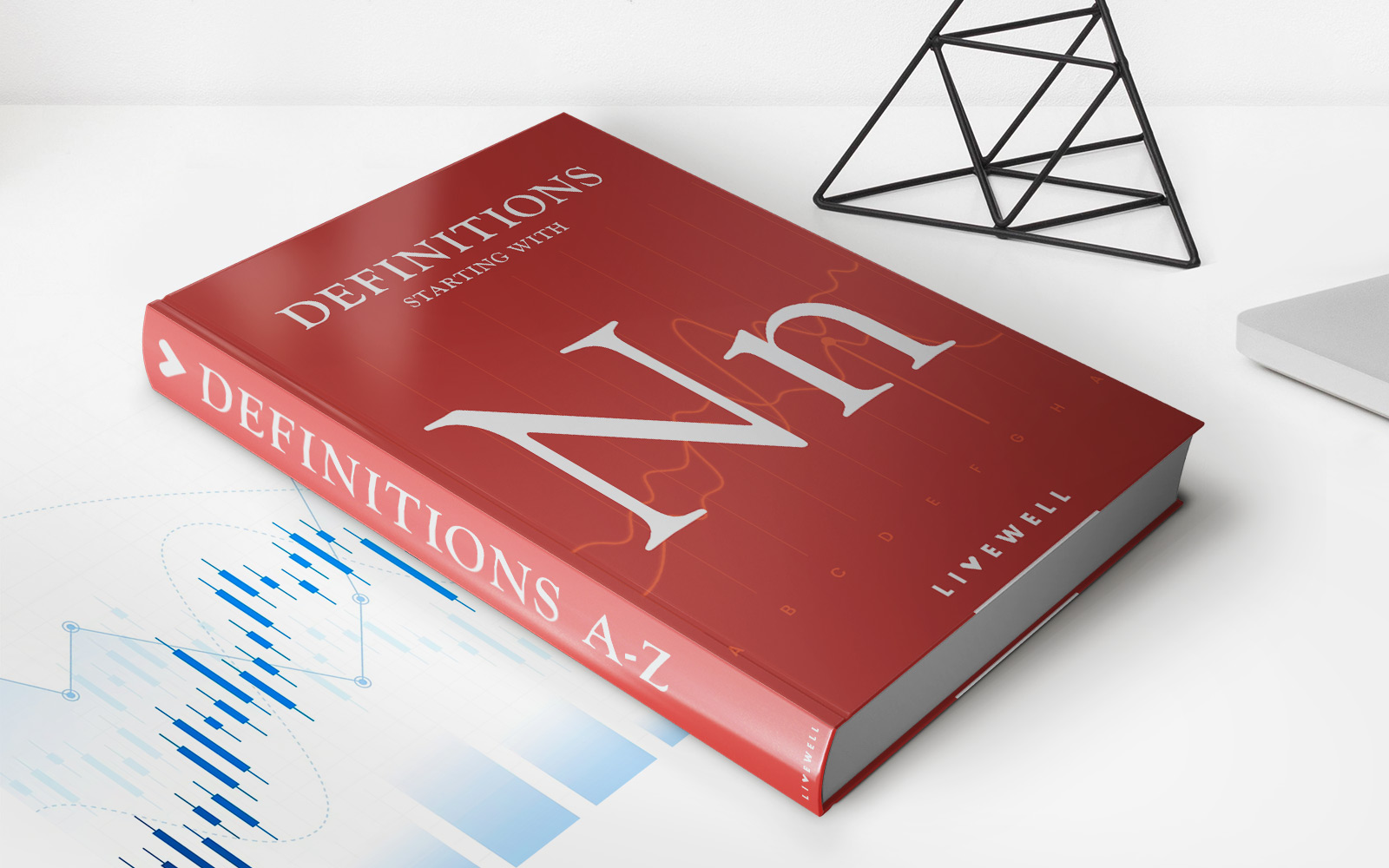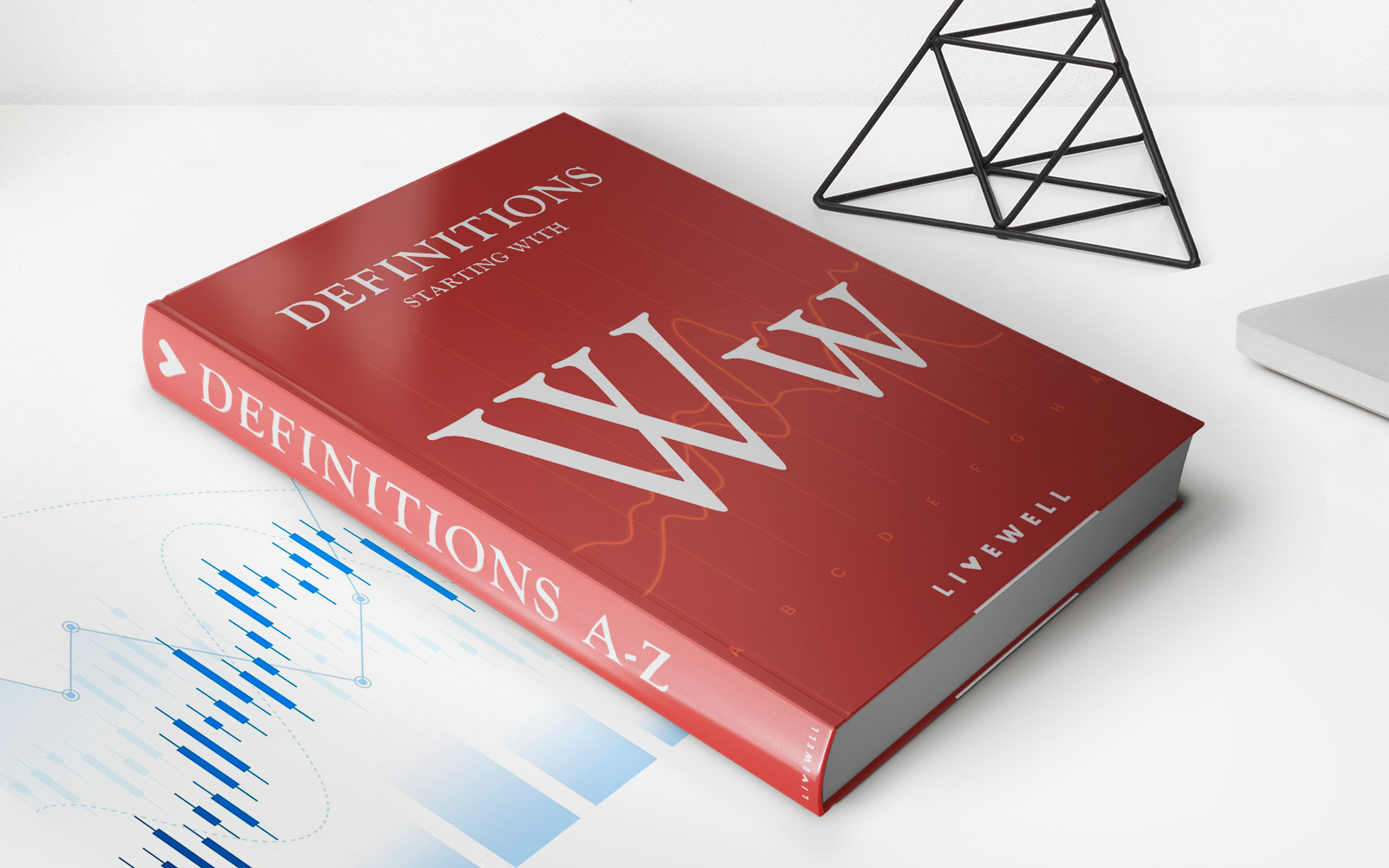

Finance
What Is Basis In Accounting
Published: October 12, 2023
Learn about the importance of basis in accounting and how it affects financial statements. Gain a deeper understanding of finance and its role in tracking business transactions.
(Many of the links in this article redirect to a specific reviewed product. Your purchase of these products through affiliate links helps to generate commission for LiveWell, at no extra cost. Learn more)
Table of Contents
Introduction
Accounting is a vital component of any business. It involves the recording, classifying, and summarizing of financial transactions to provide a clear picture of the financial health of an organization. One important concept in accounting is the basis, which refers to the method used to measure and report financial information.
The basis in accounting is the foundation on which financial statements are prepared. It determines how assets, liabilities, income, and expenses are recorded and presented. The use of different basis can significantly impact the reported financial results, making it crucial for businesses to understand the various types of basis available and their implications.
In this article, we will delve into the definition, importance, and types of basis in accounting, including historical cost basis, fair value basis, and adjusted cost basis. By gaining a thorough understanding of the basis in accounting, businesses can make informed decisions based on accurate financial information and ensure compliance with accounting standards and regulations.
Definition of Basis in Accounting
In accounting, the term “basis” refers to the method or principle used to measure and report financial information. It serves as the underlying framework for recording and presenting financial data in a consistent and meaningful way. The choice of basis can have a significant impact on how financial information is interpreted and analyzed.
The basis in accounting establishes guidelines for valuing assets, determining income, and recording expenses. It provides a set of rules and principles that help accountants accurately measure and communicate the financial position and performance of an entity.
At its core, the basis in accounting acts as a reference point for determining the value of assets and liabilities. It dictates whether these items are measured at their historical cost, fair value, or adjusted cost.
The basis in accounting not only impacts the financial statements but also affects the taxation and regulatory requirements for businesses. Different jurisdictions may have specific rules regarding the basis for financial reporting and tax purposes. Therefore, it is essential for companies to understand the basis used in their country or region to ensure compliance with applicable laws and regulations.
Importance of Basis in Accounting
The basis in accounting plays a crucial role in providing relevant and reliable financial information. Here are some key reasons why the basis is important in accounting:
1. Consistency: By adopting a specific basis, businesses can ensure consistency in reporting their financial information. Consistency allows for easier comparison of financial data over different periods and between different entities. It enables stakeholders to make informed decisions based on reliable and comparable information.
2. Valuation of Assets and Liabilities: The basis determines how assets and liabilities are measured. Whether it is historical cost, fair value, or adjusted cost, the choice of basis affects how these items are valued in the financial statements. Accurate valuation is crucial for assessing the financial health of an organization and making informed investment decisions.
3. Compliance with Accounting Standards: Accounting standards, such as Generally Accepted Accounting Principles (GAAP) or International Financial Reporting Standards (IFRS), provide guidelines on the use of basis in financial reporting. Adhering to these standards ensures consistency and comparability across different businesses and enhances the credibility and transparency of financial information.
4. Decision-making: The basis in accounting influences the reported income, expenses, and overall financial performance of a company. An accurate and reliable basis is necessary for management to make informed business decisions, such as assessing profitability, evaluating investment opportunities, and setting pricing strategies.
5. Regulatory Compliance: In addition to financial reporting, the basis used in accounting also affects compliance with tax regulations and other legal requirements. Different tax jurisdictions may have specific rules on the valuation of assets and the recognition of income, which businesses need to adhere to in order to meet their tax obligations.
In summary, the basis in accounting is crucial for maintaining consistency, accurate valuation of assets and liabilities, compliance with accounting standards, informed decision-making, and regulatory compliance. Businesses must carefully consider and apply the appropriate basis to ensure the reliability and relevance of their financial information.
Types of Basis in Accounting
In accounting, there are several types of basis used to measure and report financial information. These include historical cost basis, fair value basis, and adjusted cost basis. Let’s take a closer look at each of these basis:
1. Historical Cost Basis:
Historical cost basis is the most commonly used basis in accounting. It involves valuing assets and liabilities at their original acquisition cost. Under this basis, assets are recorded at the amount paid to acquire them, while liabilities are recorded at the amount owed when they were incurred. The historical cost basis assumes that the value of assets and liabilities remains stable over time, regardless of changes in market conditions.
This basis is particularly useful when there is a low level of uncertainty regarding the future cash flows associated with assets and liabilities. It provides a reliable and straightforward method of valuation, especially for assets with long useful lives, such as property, plant, and equipment.
2. Fair Value Basis:
Fair value basis involves valuing assets and liabilities based on their current market value. Under this basis, the financial statements reflect the amount that could be obtained by selling an asset or settling a liability in an orderly transaction between market participants. Fair value is determined using various valuation techniques, such as market prices, present value calculations, or appraisals.
The fair value basis provides a more accurate reflection of the current economic conditions and the value of assets and liabilities. It is especially relevant for financial instruments, such as stocks, bonds, and derivatives, which have readily available market prices. Fair value accounting allows investors and stakeholders to make more informed decisions by providing up-to-date and relevant information.
3. Adjusted Cost Basis:
Adjusted cost basis involves modifying the historical cost of assets to reflect changes in their value over time. This basis takes into account factors such as depreciation, amortization, impairment, and inflation. Adjusted cost basis allows businesses to report assets at their net book value, which is the original cost less any accumulated depreciation or impairment.
This basis provides a more realistic representation of the value of assets and can be particularly relevant for items with a limited useful life, such as inventory or intangible assets. It helps businesses recognize the gradual consumption or decline in value of these assets, resulting in more accurate financial statements.
Each of these basis has its own advantages and disadvantages, and the choice of basis depends on the specific circumstances and requirements of the business. It is important for companies to evaluate which basis is most appropriate for their financial reporting needs and to consistently apply it to ensure the integrity and credibility of their financial information.
Historical Cost Basis
Historical cost basis is a widely used method in accounting for valuing assets and liabilities. This basis involves recording and reporting financial information based on the original acquisition cost of assets and the amount owed for liabilities at the time they were incurred.
Under the historical cost basis, assets are initially recognized at the cost incurred to acquire or produce them. This cost includes the purchase price, any directly attributable costs, and the costs necessary to bring the assets into their intended use. For example, if a company purchases a piece of equipment for $10,000 and incurs $500 in shipping and installation costs, the historical cost of the asset would be recorded as $10,500.
The historical cost for liabilities is recorded as the amount owed at the time they were incurred. This includes any interest or other expenses incurred in the process. For instance, if a company borrows $50,000 from a bank, the historical cost of the liability would be the initial amount borrowed plus any interest accrued until the financial statements’ reporting date.
The historical cost basis assumes that the value of assets and liabilities remains stable over time, regardless of any changes in market conditions or fluctuations in fair market value. This approach is based on the principle of prudence, which encourages the use of conservative estimates and avoids overstatement of assets or income.
One key advantage of historical cost basis is its simplicity and objectivity. Since the original cost is readily determinable and supported by reliable documentation, it provides a straightforward method of valuation. This basis is particularly useful for assets with long useful lives, such as buildings or land, where the market value may fluctuate significantly over time.
However, one limitation of historical cost basis is that it does not take into account changes in the economic environment or the potential appreciation or depreciation of assets. As a result, the financial statements prepared under historical cost basis may not provide a realistic representation of the current value or economic worth of the assets or liabilities.
Despite this limitation, the historical cost basis remains widely used in accounting due to its reliability, ease of application, and consistency over time. It provides a solid foundation for financial reporting and serves as a benchmark for comparing financial performance and evaluating the stewardship of assets.
Fair Value Basis
Fair value basis is a method employed in accounting to value assets and liabilities based on their current market value. Under this basis, financial statements reflect the amount that could be obtained by selling an asset or settling a liability in an orderly transaction between market participants.
The fair value of an asset is determined by considering a variety of factors, including market prices, present value calculations, appraisals, or other applicable valuation techniques. It takes into account the current economic conditions and the supply and demand dynamics in the market.
One key advantage of fair value basis is the relevance and timeliness of the information provided. It reflects the most up-to-date and accurate depiction of the value of assets and liabilities, allowing investors, creditors, and other stakeholders to make informed decisions based on real-time market conditions.
Fair value basis is especially relevant for financial instruments, such as stocks, bonds, and derivatives, which have readily available market prices. It provides transparency and enhances the comparability of financial information across different entities.
Furthermore, fair value basis facilitates the identification and measurement of financial risks, such as market risk or credit risk. It helps businesses assess the potential impact of changes in market conditions on their financial position and performance, enabling proactive risk management and strategic decision-making.
However, fair value basis is not without limitations. Determining the fair value of certain assets or liabilities may be subjective and complex, particularly when there are limited market transactions or illiquid markets. In such cases, professional judgment and the use of valuation techniques become crucial.
Moreover, fair value measurements may be subject to significant fluctuations due to market volatility. This can result in increased income volatility and potential challenges in comparing financial performance across different reporting periods.
Despite these challenges, fair value basis provides valuable information for assessing the current economic value of assets and liabilities. It enhances the transparency and accuracy of financial reporting, enabling stakeholders to make well-informed decisions based on current market conditions.
It is important to note that fair value basis may be required or encouraged by accounting standards, regulatory bodies, or specific industry practices. Companies must carefully evaluate the applicability and relevance of fair value measurements to their specific circumstances and consistently apply the appropriate valuation techniques.
Adjusted Cost Basis
Adjusted cost basis is a method of valuing assets in accounting that takes into account changes in their value over time. This basis adjusts the historical cost of assets to reflect factors such as depreciation, amortization, impairment, or inflation.
Under adjusted cost basis, assets are recorded at their net book value, which is the original cost of the asset less any accumulated depreciation or impairment. This adjustment reflects the gradual consumption or decline in value of the asset over its useful life.
For example, let’s consider a company that purchases a delivery truck for $50,000. Over time, the truck’s value decreases due to wear and tear and technological advancements. The adjusted cost basis method would recognize this decline through recording depreciation expense, reducing the truck’s value on the balance sheet.
This basis is particularly relevant for assets with limited useful lives or assets that experience obsolescence. It provides a more realistic representation of the asset’s value and helps to accurately match the cost of the asset with the revenue it generates over time.
Adjusted cost basis also accounts for other factors that may impact the value of an asset, such as impairment or inflation. If an asset’s value is impaired due to unexpected events or changes in market conditions, the adjusted cost basis allows for a reduction in the carrying amount to reflect the impaired value.
Similarly, adjusted cost basis may be used to account for the effects of inflation. Inflation erodes the purchasing power of money over time, and adjusting the historical cost of assets helps to maintain a more accurate representation of their value in current terms.
One of the advantages of adjusted cost basis is that it provides a more conservative and realistic assessment of the value of assets. It recognizes the gradual consumption or decline in value of the asset throughout its useful life, resulting in more accurate financial statements.
However, one limitation of adjusted cost basis is that it does not consider changes in market value that may occur over time. The value of an asset under adjusted cost basis may differ from its fair market value, which could potentially affect decision-making processes.
Despite this limitation, adjusted cost basis is widely used in accounting as it provides a more accurate representation of the value of assets. It helps businesses report their financial statements in a manner that reflects the economic value of the assets and facilitates informed decision-making.
Comparison of Different Basis in Accounting
Choosing the appropriate basis in accounting is essential for accurately and reliably reporting financial information. Let’s compare and contrast the three main types of basis – historical cost basis, fair value basis, and adjusted cost basis – to understand their differences and implications.
Historical Cost Basis:
Historical cost basis is the most commonly used method in accounting. It values assets and liabilities at their original acquisition cost and assumes that their value remains stable over time. This basis is straightforward to apply and provides a reliable measure of assets and liabilities. However, it may not reflect the changes in market value or economic conditions and can result in outdated information.
Fair Value Basis:
Fair value basis values assets and liabilities based on their current market value. It provides a more relevant and up-to-date measurement of the value of assets and liabilities. Fair value basis is especially useful for financial instruments with readily available market prices. However, it requires reliable market data and can be subjective in cases where market prices are not readily determinable, leading to potential difficulties in valuation.
Adjusted Cost Basis:
Adjusted cost basis adjusts the historical cost of assets to account for factors such as depreciation, amortization, impairment, or inflation. It provides a more realistic representation of an asset’s value over its useful life and can result in more accurate financial statements. Adjusted cost basis is particularly suitable for assets with limited useful lives or assets experiencing technological changes. However, it does not consider changes in market value and may not reflect the current economic or fair market value of an asset.
The choice of basis depends on various factors, including the nature of the assets, industry practices, regulatory requirements, and the needs of the users of financial information. Businesses must carefully consider which basis is most appropriate for their specific circumstances.
It is also important to note that accounting standards may prescribe the use of a specific basis for certain types of assets or transactions. For example, financial instruments are often measured at fair value, while property, plant, and equipment are typically reported under historical cost basis.
Ultimately, businesses may need to utilize a combination of different basis depending on their asset portfolio and reporting requirements. This may involve using historical cost basis for certain assets, fair value basis for financial instruments, and adjusted cost basis for assets with limited useful lives.
By understanding the differences and implications of each basis, businesses can make informed decisions about the most appropriate method for valuing their assets and liabilities, ensuring the reliability and integrity of their financial reporting.
Conclusion
In conclusion, the basis in accounting is a fundamental concept that determines how financial information is measured and reported. The choice of basis, whether it is historical cost, fair value, or adjusted cost, significantly impacts the reliability and relevance of financial statements.
Historical cost basis, the most commonly used method, provides a straightforward and reliable measure of assets and liabilities. It assumes that their value remains stable over time, although it may not reflect changes in market value or economic conditions.
Fair value basis, on the other hand, values assets and liabilities based on their current market value. This basis provides a more relevant and up-to-date measurement, especially for financial instruments. However, it may require reliable market data and can be subjective in cases where market prices are not readily available.
Adjusted cost basis adjusts the historical cost of assets to account for factors such as depreciation, amortization, impairment, or inflation. It offers a more realistic representation of an asset’s value over its useful life and can result in more accurate financial statements.
Businesses must carefully consider the appropriate basis to use, taking into account factors such as asset type, industry practices, regulatory requirements, and users’ needs. In some cases, a combination of different basis may be necessary depending on the asset portfolio and reporting requirements.
Regardless of the basis used, consistency and adherence to applicable accounting standards are crucial. This ensures comparability, reliability, and transparency in financial reporting, enabling stakeholders to make informed decisions and assessments of a company’s financial position and performance.
Understanding the different types of basis in accounting allows businesses to present financial information accurately and effectively. It enables the effective communication of financial results and provides a solid foundation for informed decision-making, regulatory compliance, and strategic planning.
By considering the advantages, limitations, and implications of each basis, businesses can choose the appropriate method for valuing their assets and liabilities, ensuring the integrity and credibility of their financial statements.














